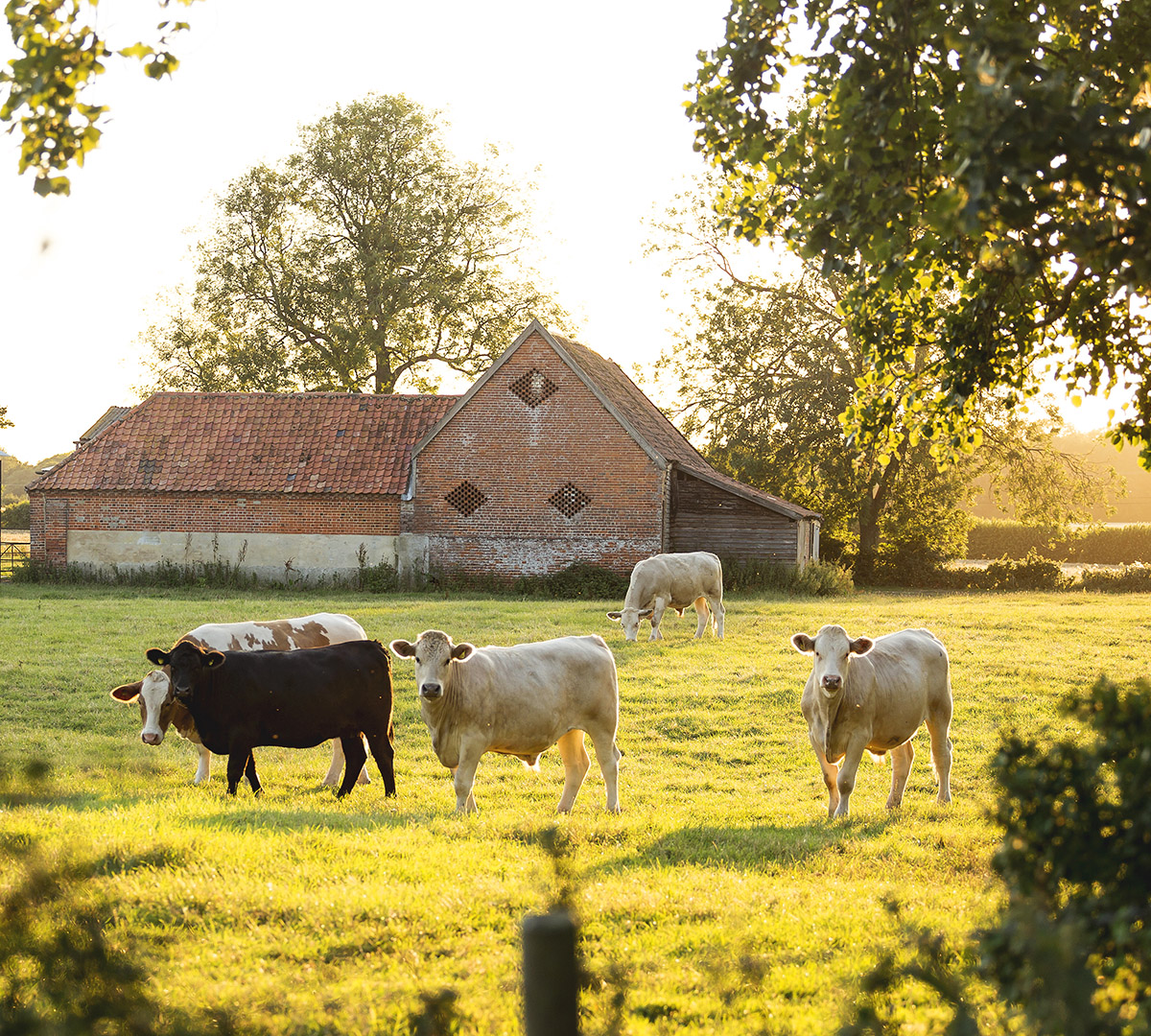Curious Questions: Why were ferns considered magical?
Martin Fone considers the beautiful and ancient fern, once commonly held to have mysterious properties.


Dense stands of Britain’s most common fern, Pteridium aquilinum, bracken, carpet the floor of the woodlands near where I live, marking the progress of the year. Their tightly curled fronds appear in spring, slowly but inexorably unfurling into three large, triangular fronds which wave and susurrate in the summer breeze before dying back in the autumn to leave a rusty brown matting.
Sculptural, dramatic, primordial they may be, but the fronds of bracken are also poisonous, packed full of Ptaquiloside, up to 0.8 percent of their dry weight some studies suggest, which can cause haemorrhagic disease and bright blindness in livestock and oesophageal and gastric cancer in humans. The Koreans, though, have been able to make gosari, bracken, a principal ingredient in bibimbap, a classic and delicious staple of their cuisine, by simply boiling the fronds which breaks down the toxins.
Bracken has long been a source of fascination. The stem, when sliced at an angle, reveals a pattern, known as the devil’s hoof in Scotland, but which many saw as representing the Greek letter chi, the initial of Christ. From this sprang the belief that it provided protection. Waving a frond in front of a witch was enough to ward off her spells and send werewolves and other evil spirits packing. In Brittany and Normandy shepherds used crosses woven from ferns to safeguard themselves and their flocks while in Slavic countries, to drive away Rusalki, freshwater sirens with a penchant for drowning mortals, bathers entwined ferns into their hair before taking a plunge into a lake.
And how did the fern, which has no discernible flower or seed, propagate itself? After all, as the French botanist, Joseph Pitton de Tournefort, wrote in 1694, ‘the views of those who believe all plants have seeds are founded on very reasonable conjectures’. As plants, ferns must have flowers and seeds. The only logical conclusion was that they bloomed and produce their seeds when no one was around to see them.
It was believed that what the pastoral poet, William Browne, described as the ‘wondrous one-night seeding ferne’ in Britannia’s Pastorals (1613) took place on the stroke of midnight on Midsummer’s Eve or St John’s Eve. Conveniently, it was not only the shortest night of the year but also the exact moment that John the Baptist was said to have been born. The fern would produce a bright red flower that lit up the woods only to be immediately snatched by the devil. Others thought it was blue, always tricky to be sure when you have never seen it, while in Polish folklore the bloom would last until the first cockerel had crowed in the morning.
According to some traditions, those lucky enough to find fern seeds would have all their wishes come true, while in England their possession brought success in love. Youths would go to Boggart Hole Clough near Manchester in search of the ‘seeds of St John’s fern on the Eve of St John’s Day’ to win the hearts of those maidens who had previously spurned their advances.

Fern seeds were also associated with invisibility, a power especially useful for those up to no good. In Shakespeare’s Henry IV, Part I Act II, Scene 1 (1596-7), Gladshill tries to reassure his accomplice by saying ‘we have the receipt of fern seed; we walk invisible’ (Act II, Scene I), while in Ben Jonson’s New Inn or The Light Heart (1629) a servant, who has been discovered hiding, explains to his master that it was ‘because indeed I had no med’cine, Sir, to go invisible. No fern-side in my pocket’ (Act I, Scene VI). To be in receipt of fern seeds was 19th century slang for being invisible.
Exquisite houses, the beauty of Nature, and how to get the most from your life, straight to your inbox.
Collecting the seeds could be a dangerous occupation, fraught with disappointment. Richard Bovet wrote in Pandaemonium (1684) of ‘much discourse about the gathering of Fern-seed (which is looked upon as a Magical herb) on the night of Midsummer’s Eve, and I remember I was told of one that went to gather it, and the Spirits whistlit by his ears and sometimes struck his Hat or other parts of his Body. In fine: though he had gotten a quantity of it, and secured it in papers and a Box besides, when he came home he found it all empty. But probably this appointing of times and hours is the Devil’s institution’.
The performance of elaborate rituals, the chanting of spells, and carrying such artefacts as an earthenware dish, a pewter platter, a skull lined with moss and clay with the tress of a loved one’s hair attached, and a hazel rod with which to shake the seeds were thought to be enough to ward off the evil spirits guarding the seeds. However, failure to carry out the rituals correctly risked missing out on the seeds and incurring the displeasure of the spirits.
Some, though, believed that a more benign spirit, Oberon, guarded the seeds. Thomas Jackson, in his A treatise concerning the Original of Unbelief (1625), described his encounter with an ‘ignorant soule’ who told of ‘what he saw and heard when he watch’t the falling of the Ferne-seed at an unseasonable and suspitious houre. Why (quoth he) doe you think that the devil hath ought to do with that good seed? No: it is in the keeping of the King of the Fayries and he, I know, will do me no harm’.
More rigorous scientific minds sought to solve the mystery of the fern’s propagation. The 16th century German botanist, Hieronymus Bock, laid out white sheets underneath a stand of ferns and for four consecutive nights around Midsummer waited to see what happened. He was disappointed to find that the fern had not flowered and that his sheets were spotted with small black dots. Had he but realised it, he had solved the mystery.
The black spots were spores which are released from the sori, the brownish grey spots found on the underside of the fronds. A fern can have as many as twenty million of these spores, some as small as particles of dust. It was not until 1848 that the Polish botanist, Michael Jerome Lesczczyc-Suminski, finally unlocked the mystery of the fern’s life cycle.
Once it has found the right balance of light, temperature, and moisture, a fern spore germinates, producing a rootless, green heart-shaped leaf, the prothallium, on the underside of which are the male and female sexual organs. These produce egg and sperm which, when fertilised, develop into an embryo containing roots, stems, and leaves. It is from this that the young fern emerges, bearing the characteristics of its grandparent rather than its parent, its reproductive process so lengthy that it skips a generation.
For the fern, there is no evolutionary need to rush. It is self-sufficient, free from reliance upon pollinators, and hardy enough to germinate in the most unpromising of terrains, even in the Arctic and Antarctica, factors that have contributed to its survival for over one hundred million years. In many ways its real life cycle is as magical and mysterious as the myths that surround it.

Curious Questions: Why do clocks go clockwise?
There's nothing to stop the hands of a clock from running backwards — indeed, some actually do — but the overwhelming majority

Credit: Alamy Stock Photo
Curious Questions: Why do cats have whiskers?
Martin Fone investigates the all-important role of feline whiskers—including how they contribute to enhancing the species' beauty.

Curious Questions: If not now, when?
It might be morbid to write your own obituary, says our columnist Carla Carlisle, but nobody knows your story better

Credit: Alamy
Curious Questions: What is a weed?
They're the bane of gardeners' lives, but do they even exist, at least in any consistent and logical sense? Martin Fone

Credit: Alamy
Curious Questions: How wise are owls?
The age-old image of the intelligent owl has persisted for centuries — but are they really the intellectuals of the

Curious Questions: Are snowflakes really all unique?
Award-winning writer John Lewis-Stempel's soul is moved both by the art and the science of the snowflake.

Curious Questions: What is a jubilee?
The celebration of HM's Queen Elizabeth II Platinum Jubilee is imminent — but what is a jubilee, and where does this
After graduating in Classics from Trinity College Cambridge and a 38 year career in the financial services sector in the City of London, Martin Fone started blogging and writing on a freelance basis as he slipped into retirement. He has developed a fearless passion for investigating the quirks and oddities of life and discovering the answers to questions most of us never even think to ask. A voracious reader, a keen but distinctly amateur gardener, and a gin enthusiast, Martin lives with his wife in Surrey. He has written five books, the latest of which is More Curious Questions.
